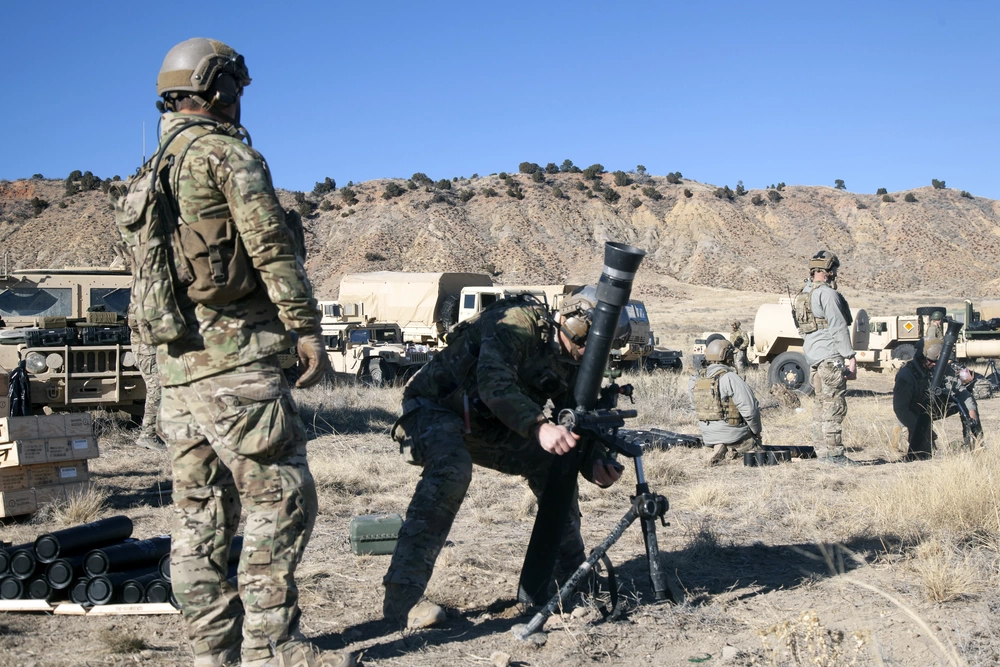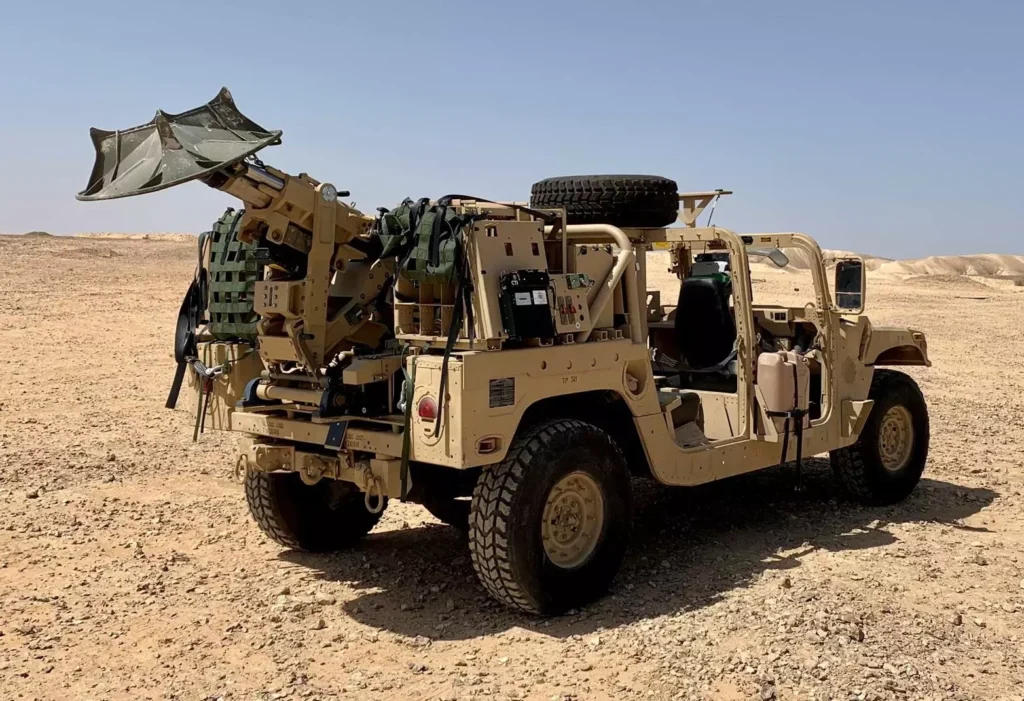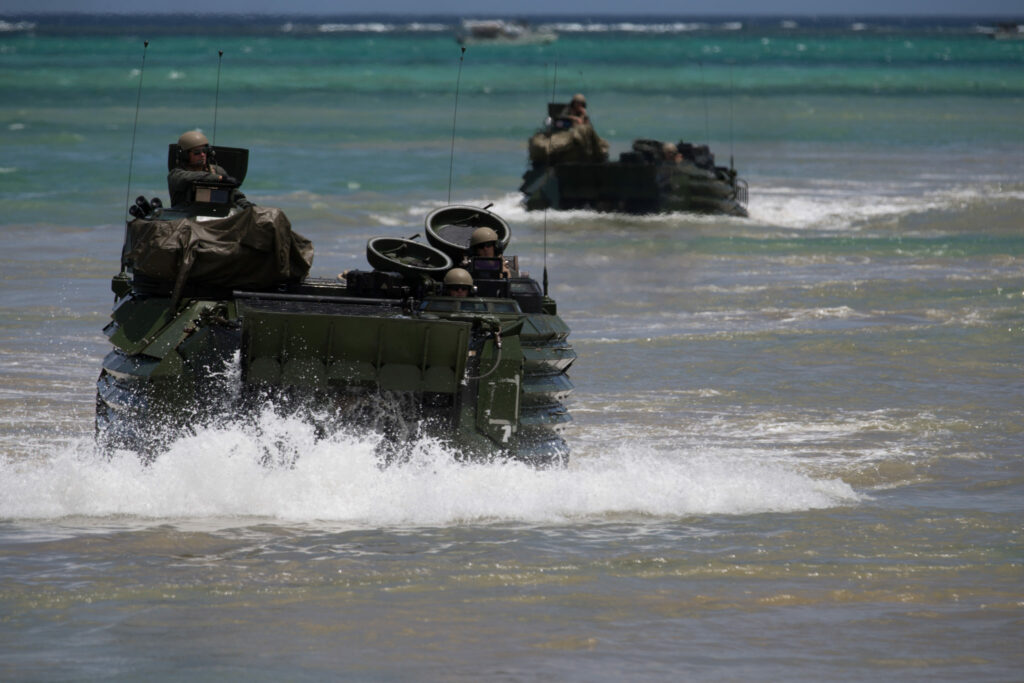Green Berets from the 3rd Special Forces Group have been testing a new, fully autonomous, computerized, mounted mortar system that can be used in a Humvee or other light, highly mobile vehicles.
The 3rd Special Force Group has partnered with the Israel Elbit Systems to “develop, test, and field” the new mortar system, according to SFC Zach VanDyke. Special Forces operators are in the final stages of development and testing and are working to assess how well the mortar system works for deployed Special Forces teams, VanDyke told Task and Purpose.
“The system will allow for more mobile and versatile capabilities on the battlefield for combatant commanders and other leaders to consider when planning both defensive and offensive operations,” VanDyke said.
The “Sling” 120mm mortar system can be fitted on many light vehicles that can carry 900 pounds of cargo weight. Elbit said on its website that the mortar could be put in or out of action in 30-60 seconds, increasing operator survivability due to its “shoot and scoot” capability. The mortar system can easily be crewed by two to four personnel.
Related: Russia uses ‘relic’ weapons in Ukraine, including the 9K111 Fagot anti-tank system

The U.S. Special Operations Command (SOCOM), the unified command that oversees the military’s special operations components, purchased one of these mortar systems in May. SOCOM has been testing them in Humvees and other light vehicles, according to Elbit.
The mortar tube and the baseplate are the same as the M120A1 120mm mortar system that Elbit Systems also builds. However, the weapon is mounted to the rear cargo compartment of a Humvee, where it can be easily put into action by being folded out and laid on the target via a fire-control and an electro-drive system that control azimuth and elevation. Because the recoil of the base plate is transferred to the ground, it doesn’t transfer any recoil to the vehicle.
The mortar can be stowed in the rear compartment by being folded back. This allows the vehicle to be easily loaded on helicopter transports without needing a trailer.
The Sling, 120mm mortar, features an accurate automatic laying system, doing away with the old hand-cranked system that slows down reaction time. It can fire 16 mortar rounds in a minute; the rounds are stored in ammo racks on the interior right side of the vehicle. The range of the mortar is about seven kms or 4.2 miles using standard ammunition.
Related: Dignity and Respect: An exclusive look at how the Army is training drill sergeants for a new era

Elbit built special ammunition that has greatly increased the range and accuracy of its mortar rounds.
The “Iron Sting” is a 120mm mortar round with inertial guidance, precision GPS, and semi-active laser seeking to provide less-than-one-meter capability at ranges out to 12 kilometers. The “LG2MK laser-guided mortar round” kit can be assembled onto existing mortar rounds in about two minutes. This changes the conventional unguided mortar round into a guided, precision munition.
The Israeli Army is already using the Elbit Sling systems, which will allow special forces operators to move into position quickly, set up fire accurately on an enemy target, and relocate quickly, thereby giving mortar crews greater survivability on the modern battlefield. The U.S. Army is looking to do the same.
Feature Image: The Sling 120mm mortar system mounted on a vehicle. (Elbit Systems)
Read more from Sandboxx News
- The Army’s Special Forces are evolving to fight adversaries in the space and cyber domains
- The small Special Forces base in al-Tanf, Syria has large implications for regional security
- US air strikes kill 15 al-Shabaab terrorists in Somalia
- Yes, WWII soldiers could throw mortar rounds like grenades
- Marine Corps is ready to bring the sting to enemy aircraft and drones




